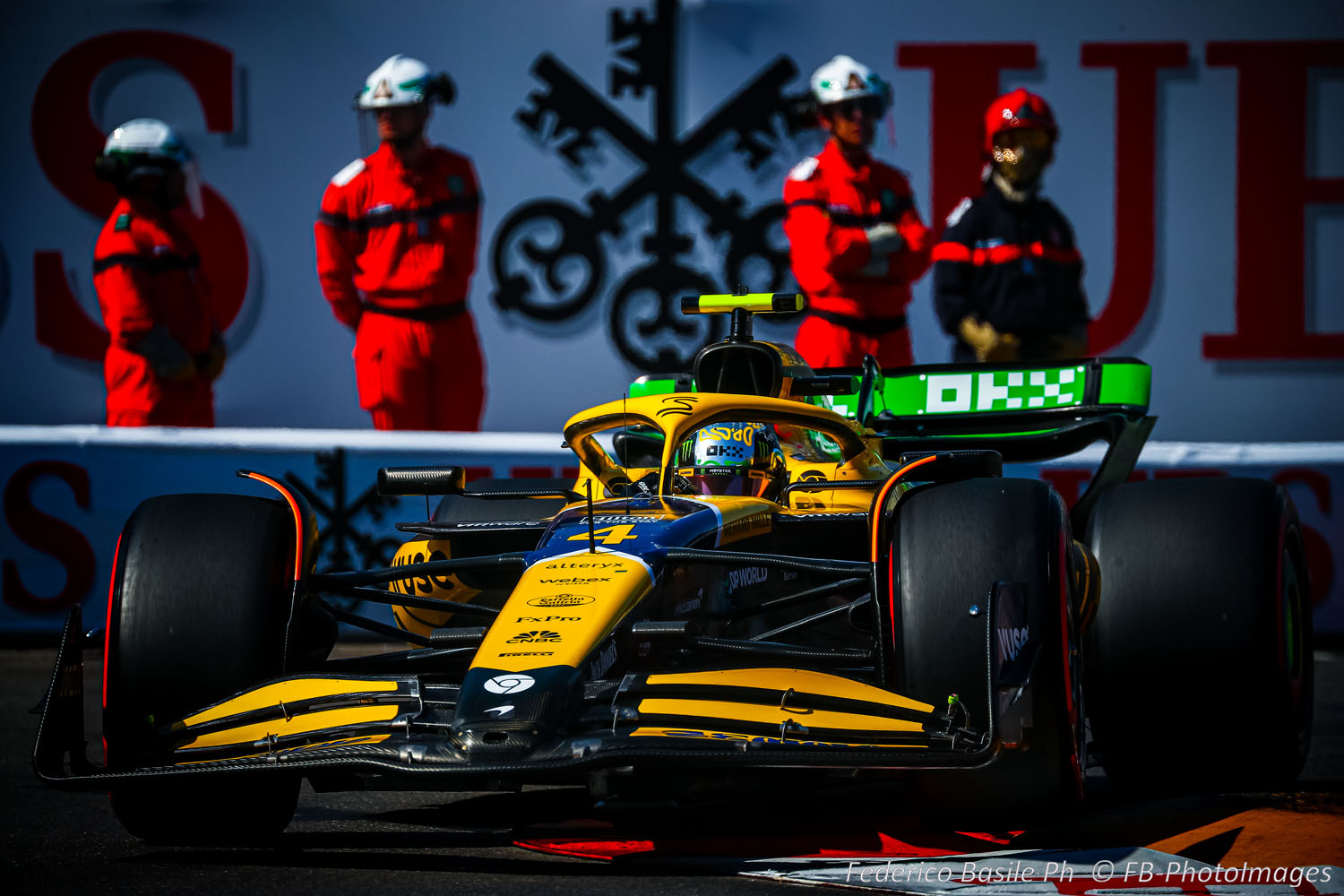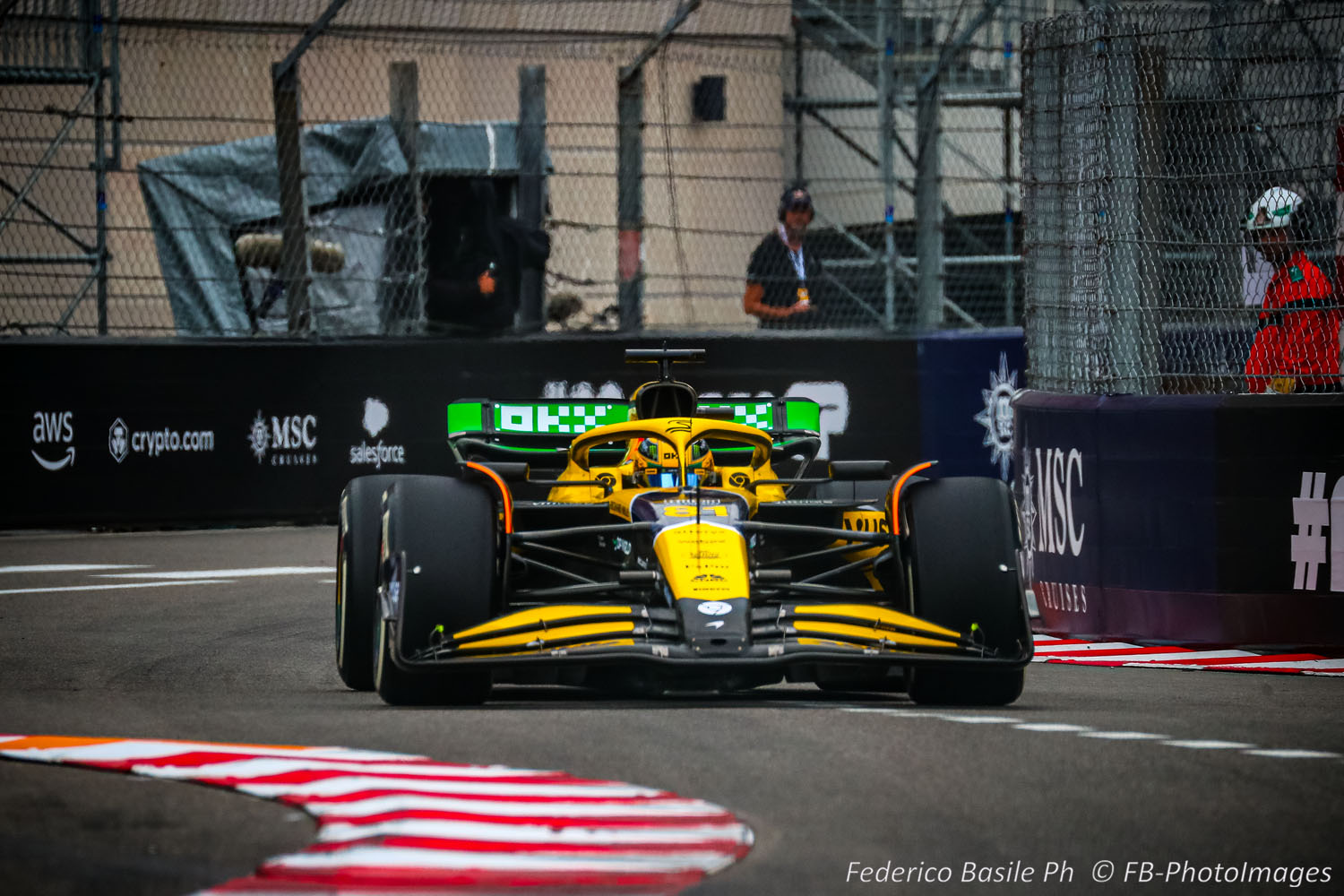Formula 1: FIA moves to clamp down on cheater flexi-wings
Formula One’s governing body, the FIA, is introducing new load tests to ensure McLaren, Mercedes, Alpine and Aston Martin cheater front and rear wings are no longer allowed this season.
–by Mark Cipolloni–
The FIA said on Friday that the scope of rear wing tests on cars would be increased from the start of the season in Australia on March 16.
Additional front wing tests will come into force starting with the Spanish Grand Prix on June 1. Until then, the cheater teams will have an advantage. Cheater because their wings flex far more than the rules allow, but they have been able to circumvent the FIA static load test with some trick carbon fiber construction.
The cheater teams were able to construct their front wings to meet the FIA’s standard static load test. The test is done by applying a 1000N load to three different points across the wing’s span and separate tests on the flaps and end plates and measuring the resultant vertical deflection.
To get the wings to flex more than the limit at speed is a complicated engineering exercise in carbon fiber construction. It involves a complex lay-up of the layers of carbon fiber mesh which constitute the wing construction.
The key was in maintaining stiffness at the inboard part of the wing but allowing a linear increase of as you traverse from the inboard part of the wing out to the far edge.
McLaren was the first to devise this cheater wing, but before too much longer Mercedes Aston Martin and Alpine. However, Red Bull and Ferrari refused to cheat and did not develop cheater flex-wings. As a result, it hurt their performance.
In an interview with Autosport, Ferrari team boss Fred Vasseur said the Scuderia had held off on its own flexi-wing design as it expected the FIA to clamp down on what other teams were doing last summer, having installed cameras and stickers to further monitor the phenomenon at July’s Belgian Grand Prix.
“We were convinced that [the FIA] would go for the ‘no go’. And it went for the ‘go!’ So probably we lost one or two months. It’s difficult because with the cost cap you have to make your choices,” Vasseur said.
“It means that if you are convinced that it won’t be allowed, and you have start to develop something, then it’s costing you a time in the wind tunnel.”

“Following further analysis carried out by the FIA single-seater department after the conclusion of the 2024 season, we are committed to ensure that bodywork flexibility is no longer a point of contention for the 2025 season,” the FIA said.
The governing body said the phased approach was to allow teams to adapt without the need to discard existing components unnecessarily.
“These adjustments are aimed at further refining our ability to monitor and enforce bodywork flexibility regulations, ensuring a level playing field for all competitors to promote fair and exciting racing,” it added.
Per the draft update to the relevant technical directive TD018, the inboard flex allowance will be reduced from 3mm to 2mm, with the outboard flex now reduced from a permitted 15mm to 10mm.
Increasing by one-third the vertical stiffness at the inboard end (when measured statically) should make it much more difficult to make a non-linear increase in flex at the outboard end at higher speeds.
The move is something of a U-turn for the FIA, who said last month that it was not planning to make any changes to the front wing tests.
Related Article: F1 News: All teams are free to use cheater flexi-front wings for ’25
